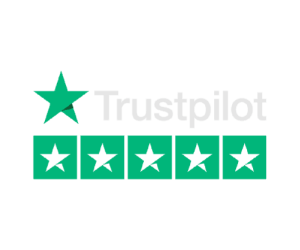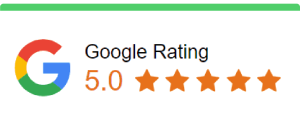In the competitive world of e-commerce, having a visually appealing website and quality products is not enough. Your online store needs a consistent flow of targeted traffic that converts into sales to thrive. This is where Search Engine Optimization (SEO) becomes crucial. Implementing effective SEO strategies can increase your e-commerce store’s visibility, attract potential customers, and boost revenue. At ArtRevo, we specialize in crafting SEO strategies tailored for e-commerce businesses, helping them succeed in a highly competitive digital landscape.
What is E-commerce SEO?
E-commerce SEO is the process of optimizing your online store to rank higher on search engine results pages (SERPs). This involves fine-tuning various aspects of your website, from product descriptions and metadata to site structure and user experience.
Effective SEO ensures that when potential customers search for products you offer, your store appears at the top of their search results, increasing your chances of driving organic traffic and conversions.
Key Benefits of E-commerce SEO
- Increased Organic Traffic: Higher rankings lead to more visibility, driving potential customers to your store without relying solely on paid ads.
- Better User Experience: SEO improves site navigation, speed, and mobile responsiveness, creating a seamless shopping experience.
- Higher Conversion Rates: Targeted SEO strategies attract high-intent customers who are more likely to make a purchase.
- Cost-Effective Marketing: Unlike paid advertising, SEO provides long-term benefits, ensuring sustainable growth.
- Brand Credibility: A top-ranking website builds trust and establishes your brand as an authority in your industry.
E-commerce SEO Strategies to Drive Traffic and Sales
1. Conduct Keyword Research
Identify high-performing keywords that your target audience uses to search for products. Focus on:
- Transactional Keywords: Phrases with purchase intent (e.g., “buy running shoes online”).
- Long-Tail Keywords: Specific queries (e.g., “best waterproof hiking boots under $100”).
- Branded Keywords: Searches related to your brand name or product line.
Pro Tip: Use tools like Google Keyword Planner, Ahrefs, or SEMrush to uncover valuable keywords.
2. Optimize Product Pages
Product pages are the heart of your e-commerce site. Optimize them for SEO by:
- Writing unique, detailed product descriptions with target keywords.
- Adding high-quality images with alt text for accessibility and SEO.
- Including user reviews to enhance credibility and keyword diversity.
3. Improve Site Structure
A well-organized site structure helps search engines and users navigate your store easily.
- Use Categories and Subcategories: Group similar products for easy navigation.
- Implement Breadcrumb Navigation: Help users track their journey on your site.
- Optimize URLs: Use descriptive, keyword-rich URLs (e.g., yourstore.com/men/running-shoes).
4. Enhance Mobile Optimization
With the majority of online shopping happening on mobile devices, a mobile-friendly site is non-negotiable.
- Use responsive design to adapt your site to all screen sizes.
- Ensure fast loading speeds, as slow pages lead to high bounce rates.
- Optimize touch elements, like buttons and links, for easy interaction.
5. Create High-Quality Content
Content marketing drives organic traffic and builds authority.
- Publish blogs, guides, or videos related to your products.
- Create content that answers common customer queries, such as “How to Choose the Right Backpack.”
- Optimize all content for keywords to improve rankings.
6. Leverage Technical SEO
Technical SEO ensures that your website is accessible to search engines and users.
- Use schema markup to enhance rich snippets for products.
- Fix broken links and redirect outdated pages.
- Submit a sitemap to Google Search Console for proper indexing.
7. Build Backlinks
Backlinks from reputable sites boost your domain authority and rankings.
- Partner with influencers or bloggers for product reviews.
- Create shareable content, like infographics or expert guides.
- List your store on industry-specific directories.
8. Optimize for Local SEO
If you have a physical store, local SEO can drive in-store traffic.
- Claim your Google My Business listing.
- Include your store’s address and contact details on your website.
- Use location-based keywords like “buy furniture in Dubai.”
9. Focus on Page Speed
Slow-loading pages can deter potential customers and harm your rankings.
- Compress images to reduce file sizes.
- Use a Content Delivery Network (CDN) to improve loading times globally.
- Minimize the use of heavy scripts and plugins.
10. Monitor Performance Metrics
Track and analyze your SEO efforts to identify areas of improvement.
- Traffic Sources: Check where your visitors are coming from.
- Conversion Rates: Measure how well your site turns traffic into sales.
- Bounce Rates: Identify pages where visitors drop off and optimize them.
E-commerce SEO Trends to Watch
- Voice Search Optimization: Optimize for natural language queries to capture voice search traffic.
- AI-Powered Tools: Use AI for keyword research, content optimization, and analytics.
- Sustainable Shopping Keywords: Incorporate eco-conscious keywords as consumer interest grows.
Why Choose ArtRevo for E-commerce SEO?
At ArtRevo, we specialize in helping e-commerce businesses dominate search rankings and achieve their sales goals. Our team of SEO experts delivers:
- Customized strategies tailored to your niche.
- Advanced technical SEO to improve site performance.
- Keyword-driven content that attracts high-converting traffic.
- Ongoing analysis and optimization to stay ahead of competitors.
FAQs About E-commerce SEO
1. How long does it take to see results from SEO for e-commerce?
SEO is a long-term strategy, and it typically takes 3–6 months to see significant improvements in rankings and traffic.
2. Do I still need SEO if I’m running paid ads?
Yes! Paid ads drive immediate traffic, but SEO provides sustainable, organic growth, reducing your dependency on paid campaigns.
3. How do I optimize product descriptions for SEO?
Write unique, detailed descriptions that include target keywords naturally. Highlight product features and benefits while avoiding duplicate content.
4. Can SEO help reduce cart abandonment rates?
While SEO focuses on driving traffic, it can indirectly reduce cart abandonment by improving site speed, mobile usability, and customer trust.
5. What’s the difference between technical SEO and on-page SEO?
Technical SEO involves backend optimizations like site speed and indexing, while on-page SEO focuses on optimizing content and metadata visible to users.
Conclusion: Boost Your E-commerce Success with SEO
SEO is the backbone of a successful e-commerce business. By implementing targeted strategies and keeping up with trends, you can drive traffic, enhance user experience, and increase sales. At ArtRevo, we’re here to help you create a winning SEO strategy that delivers measurable results.
Contact us today to start driving more traffic and sales to your e-commerce store. Let’s build your path to digital success!



